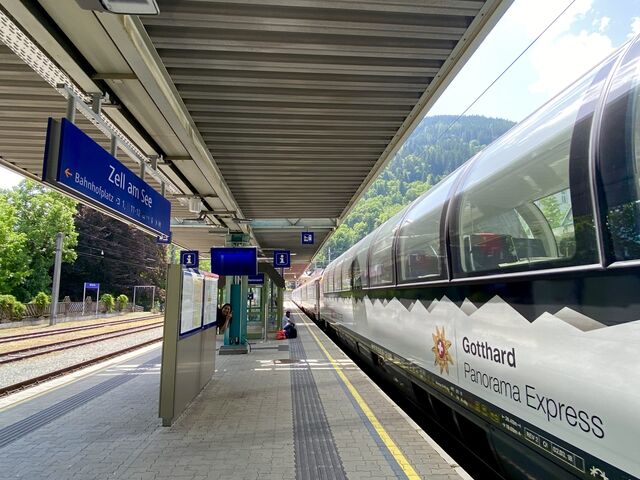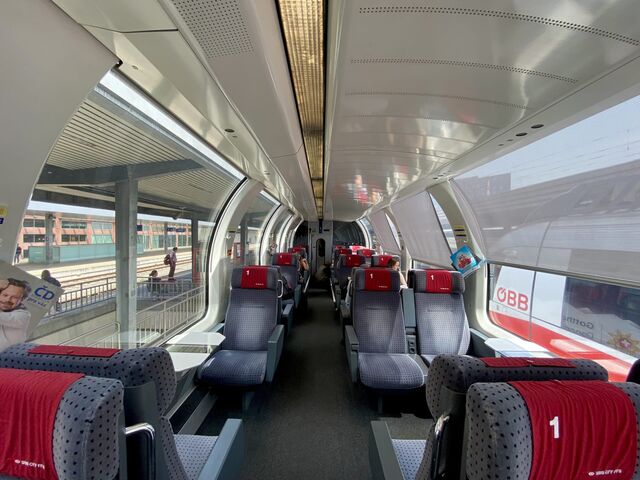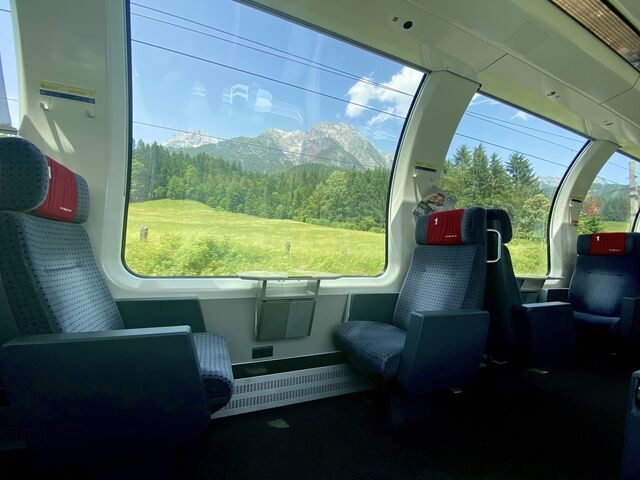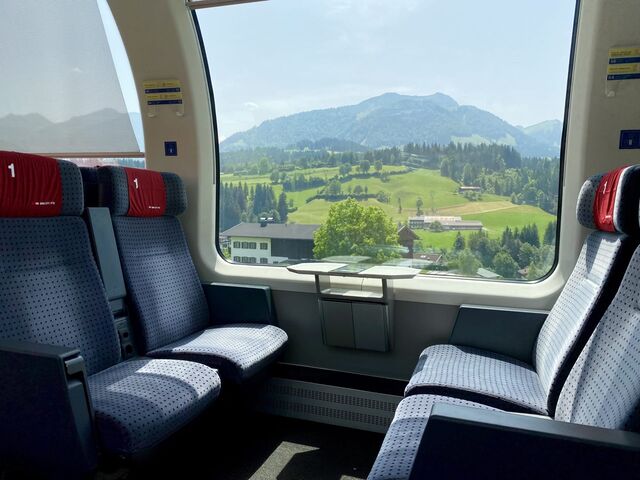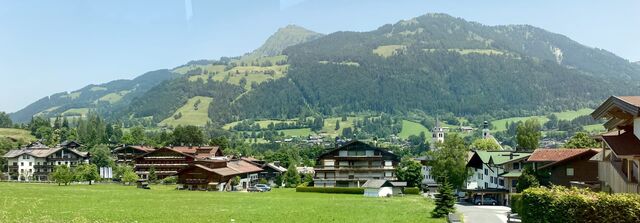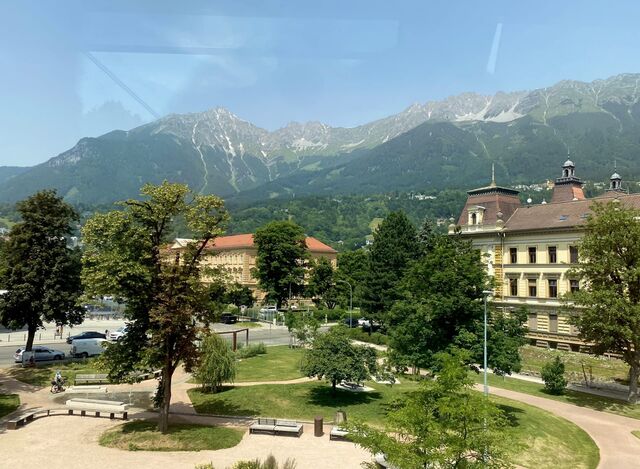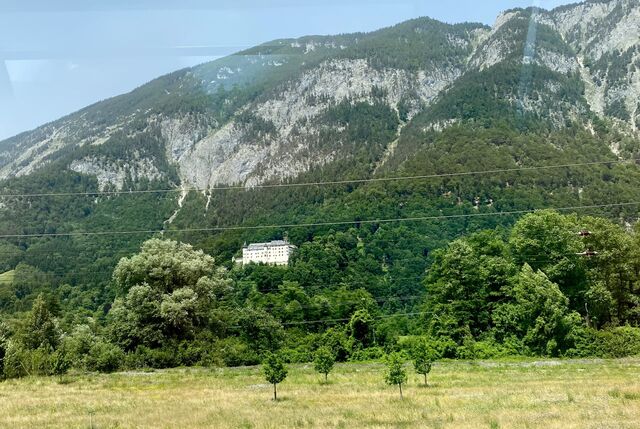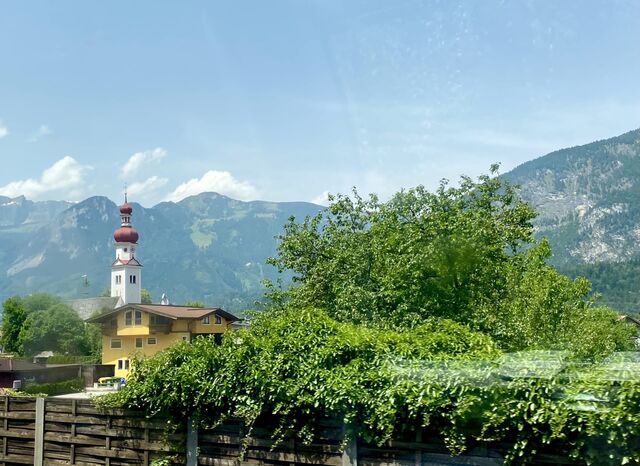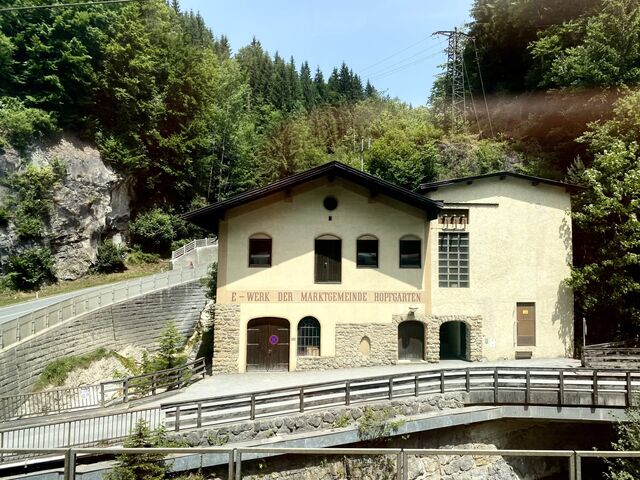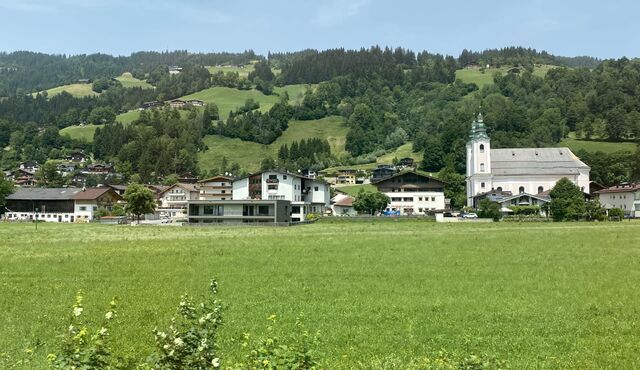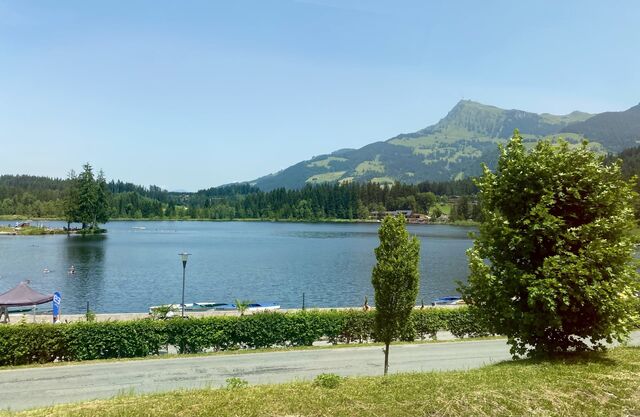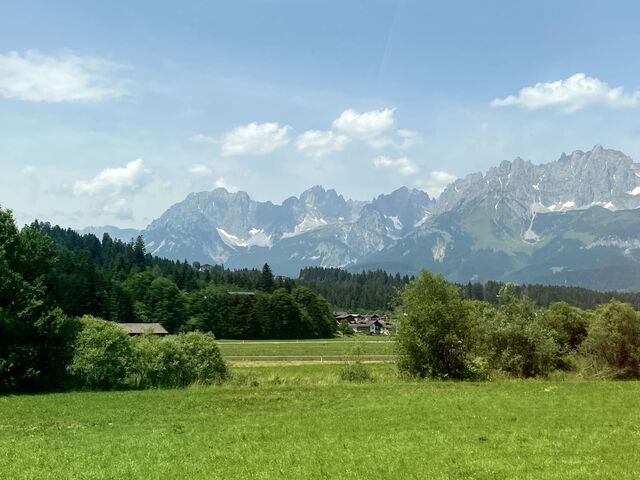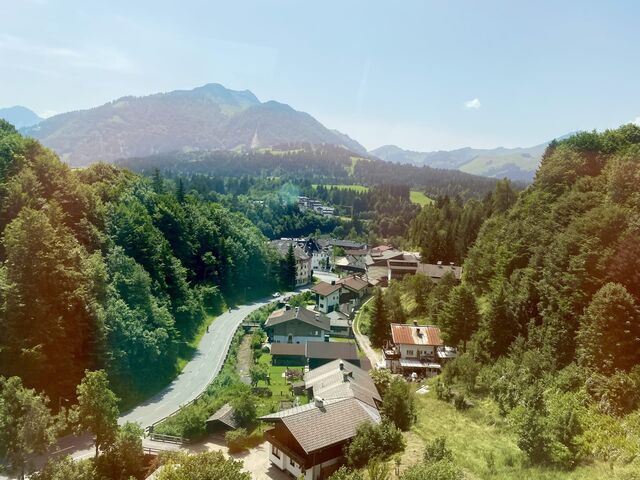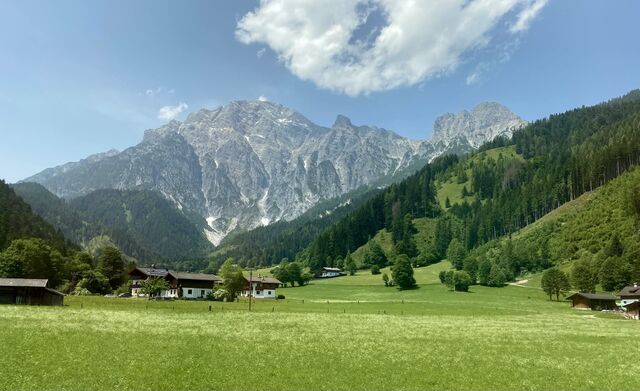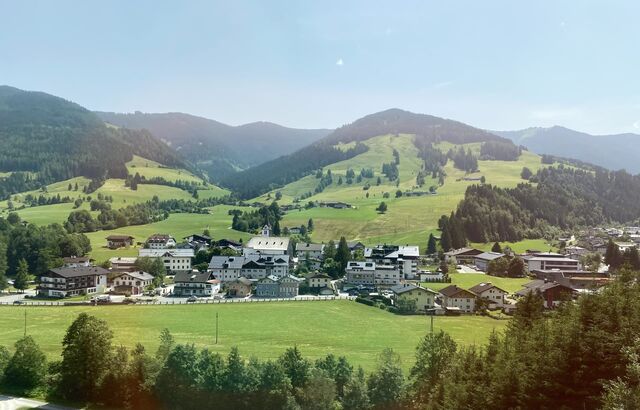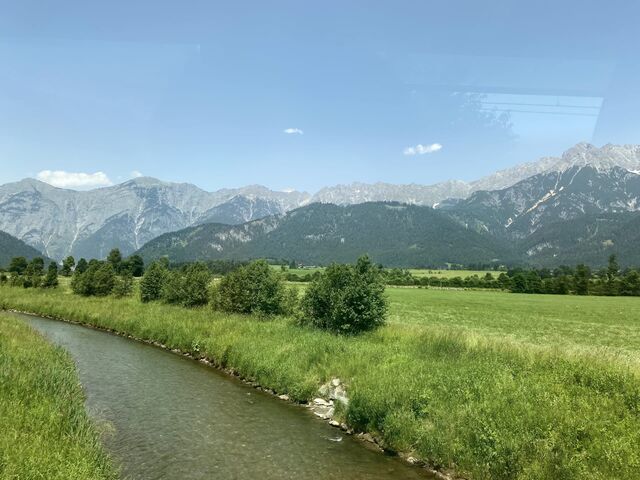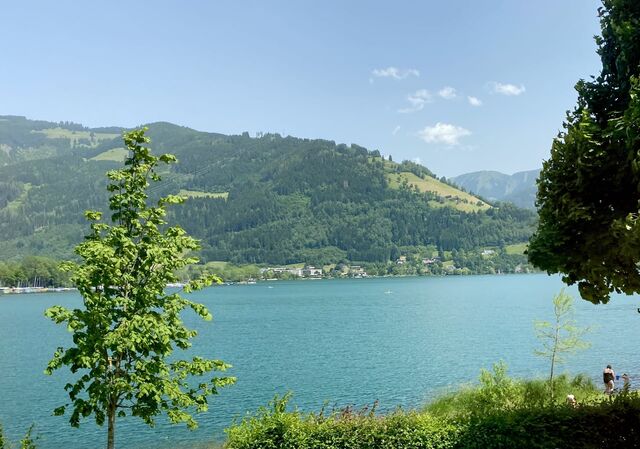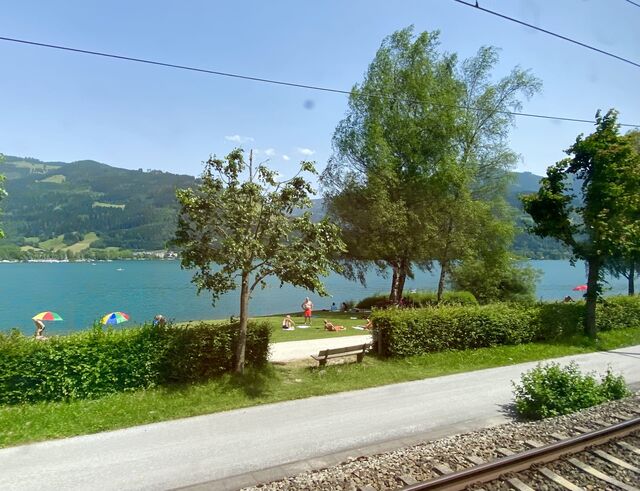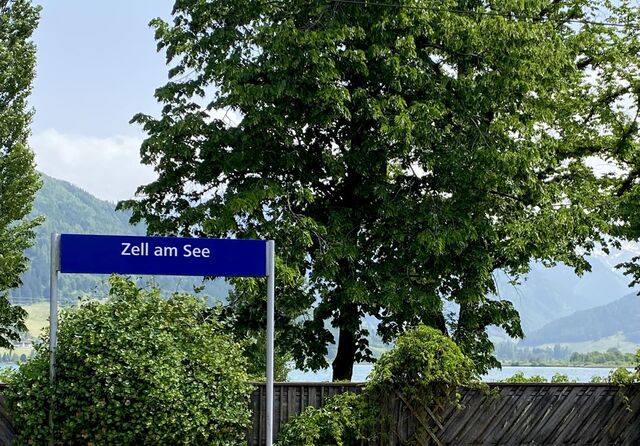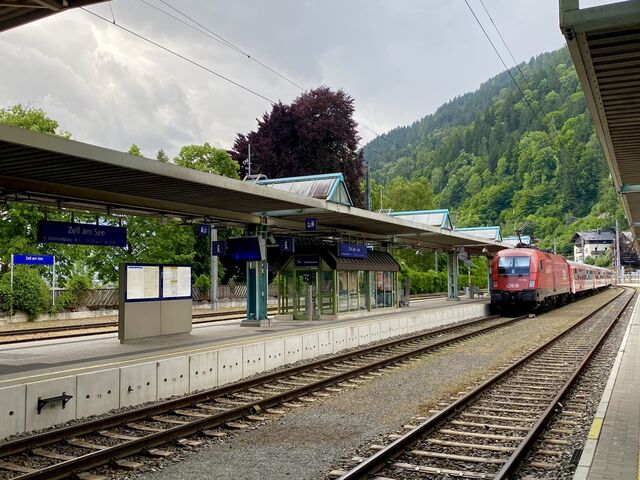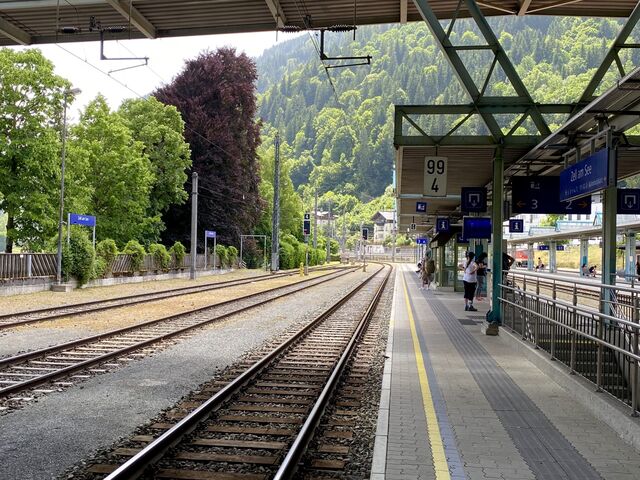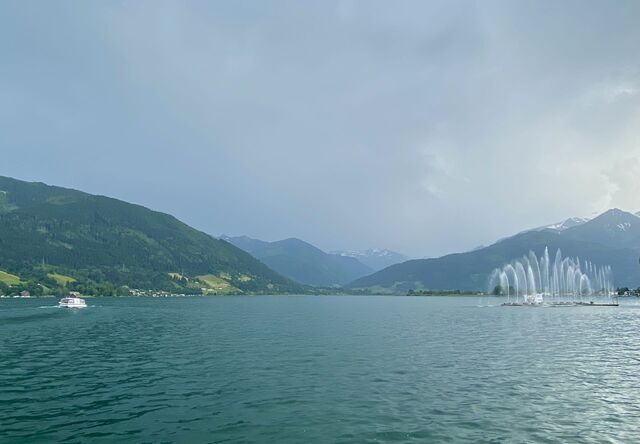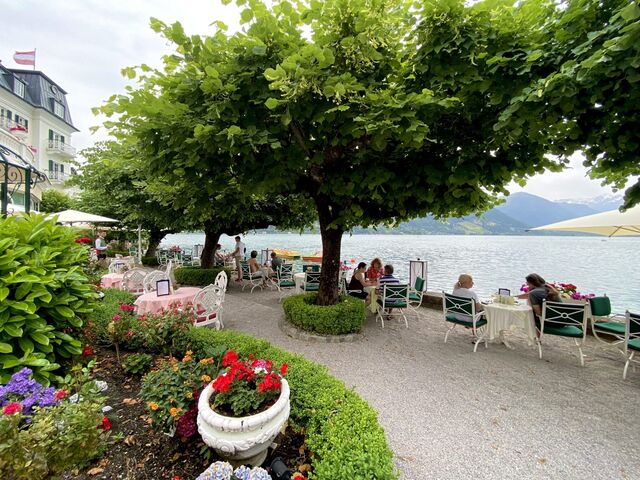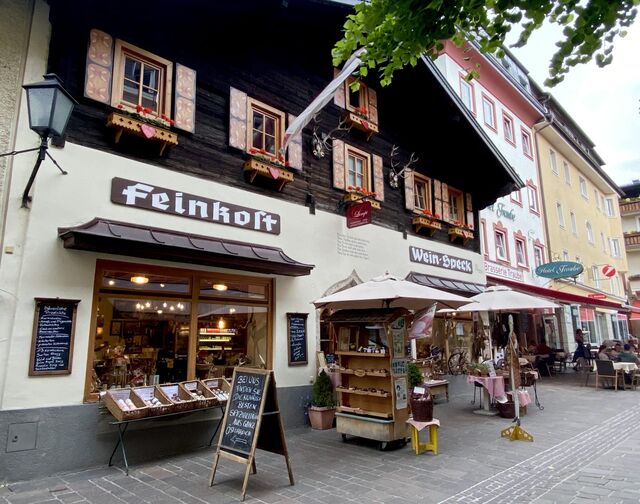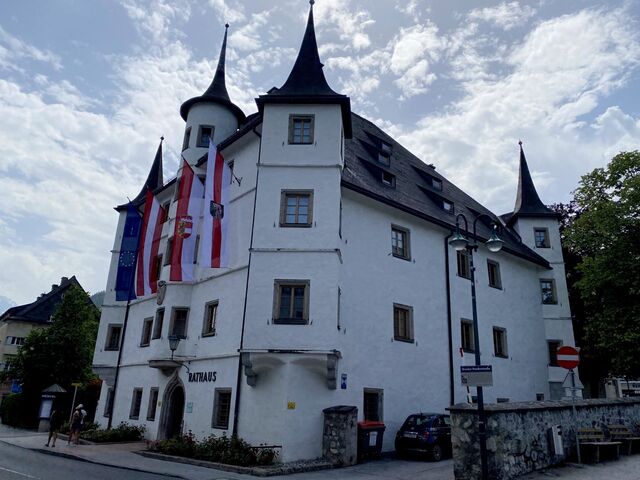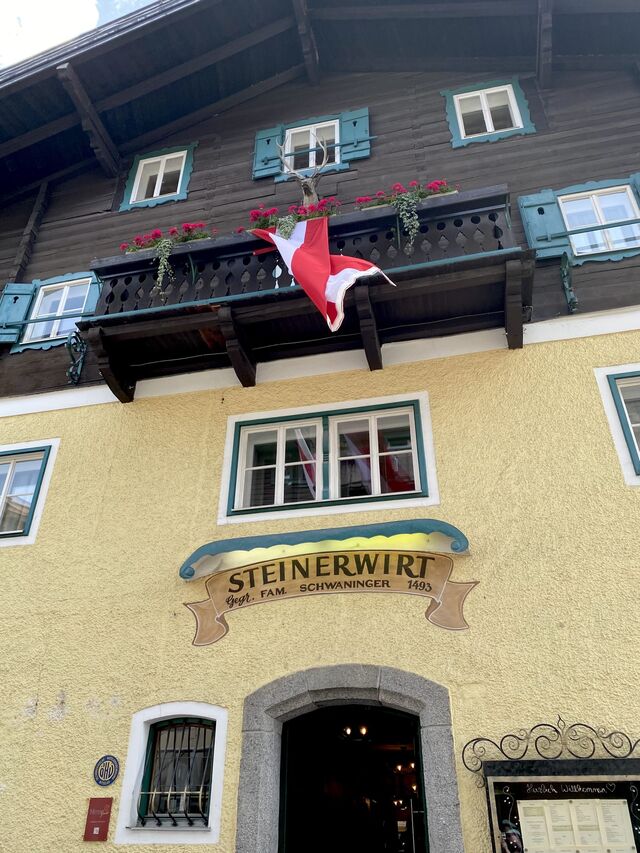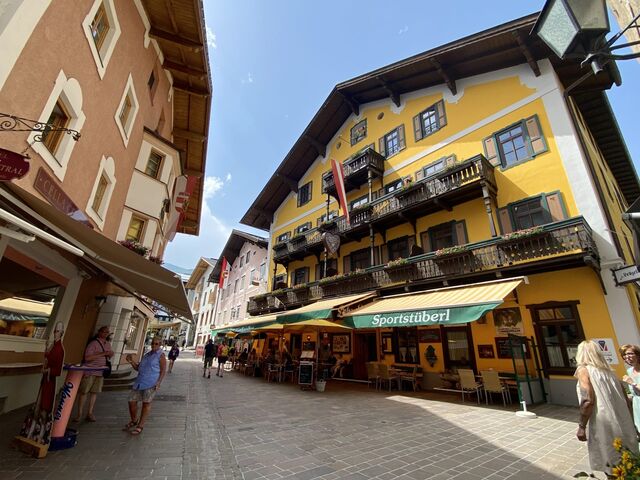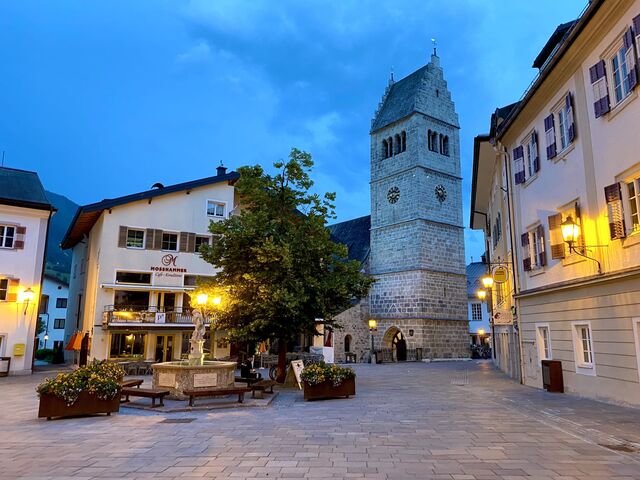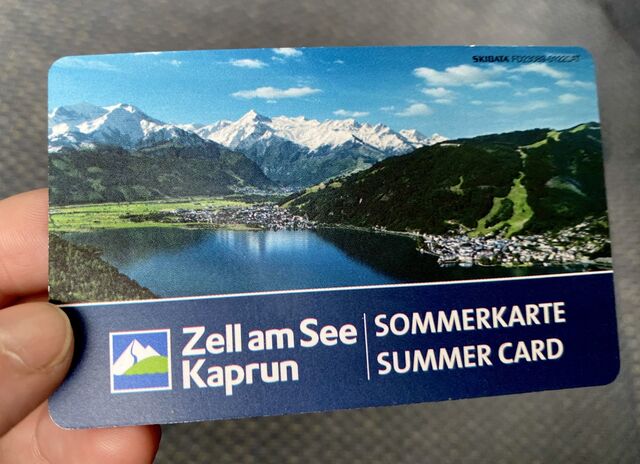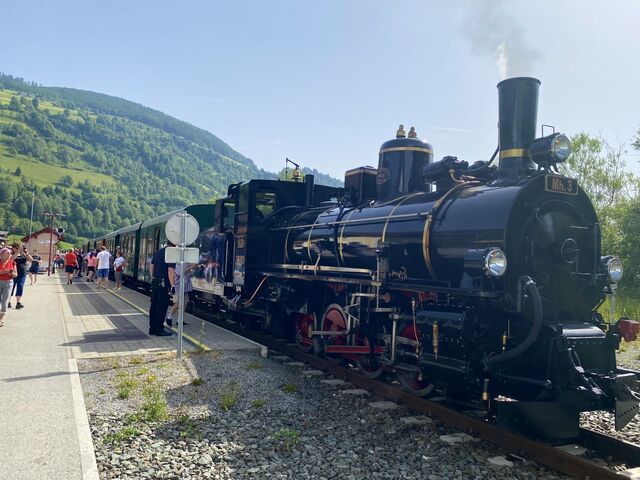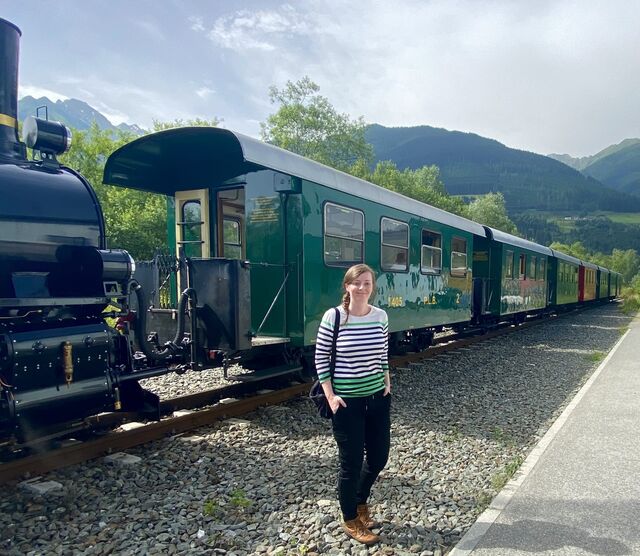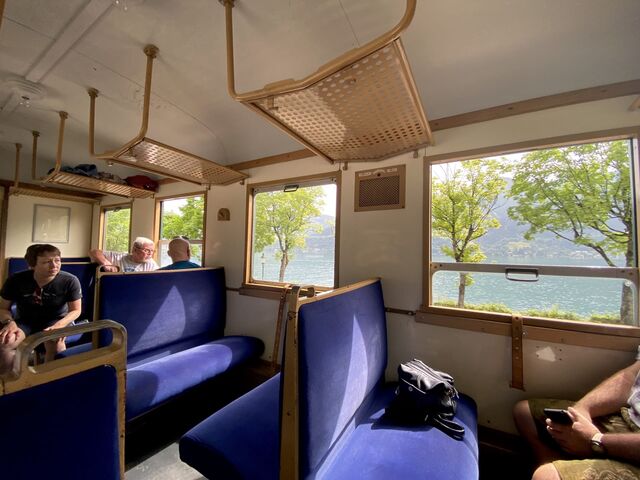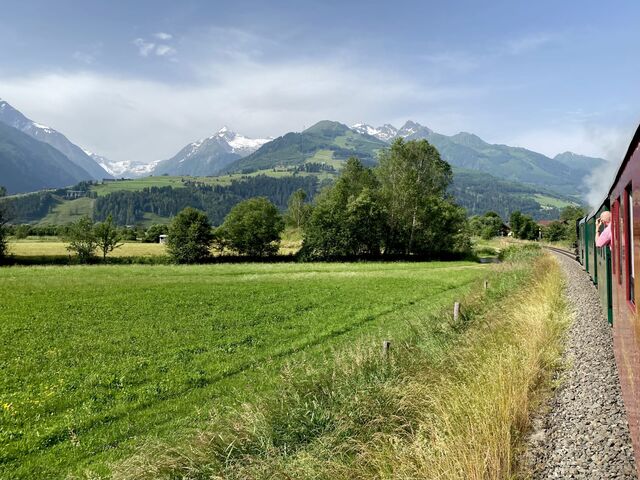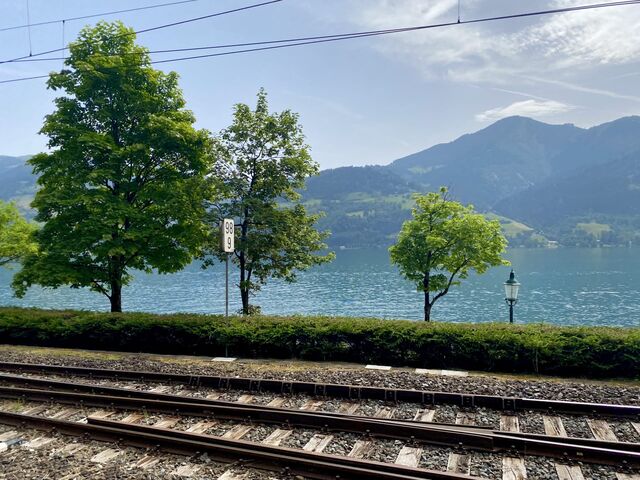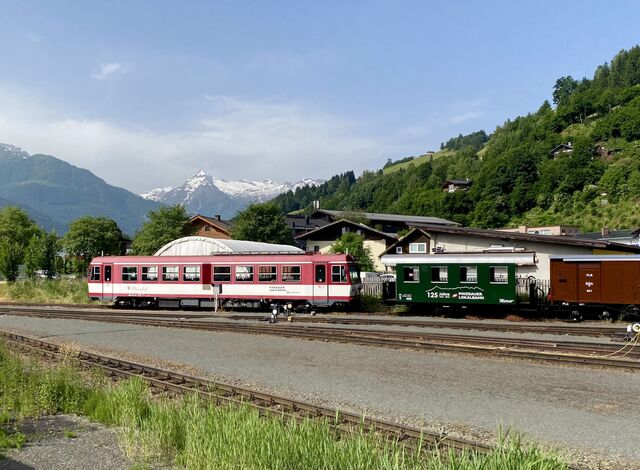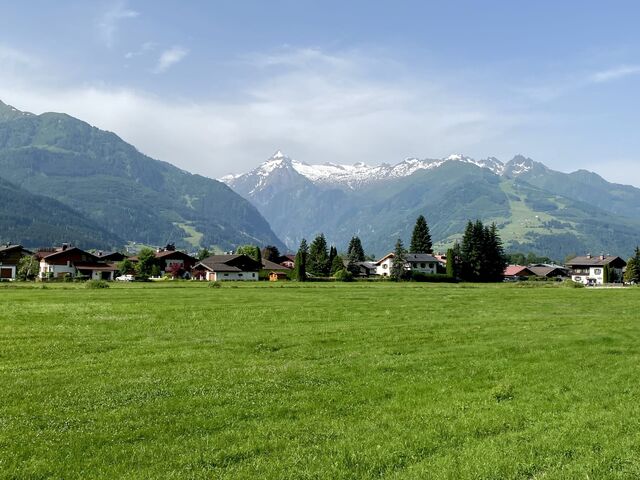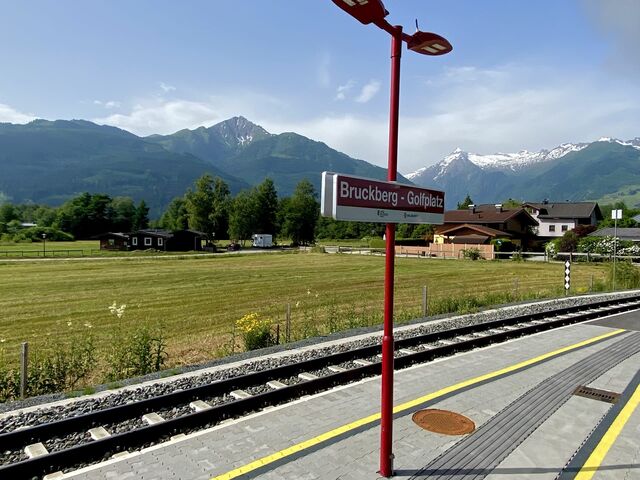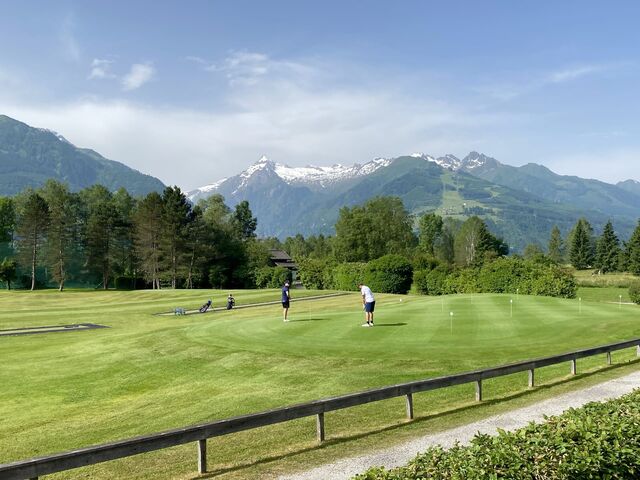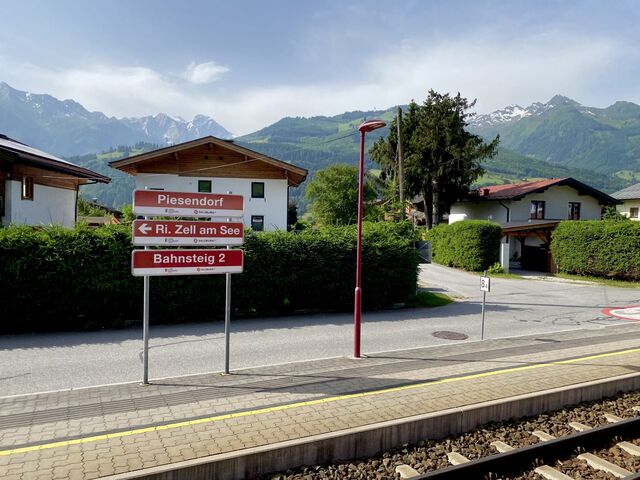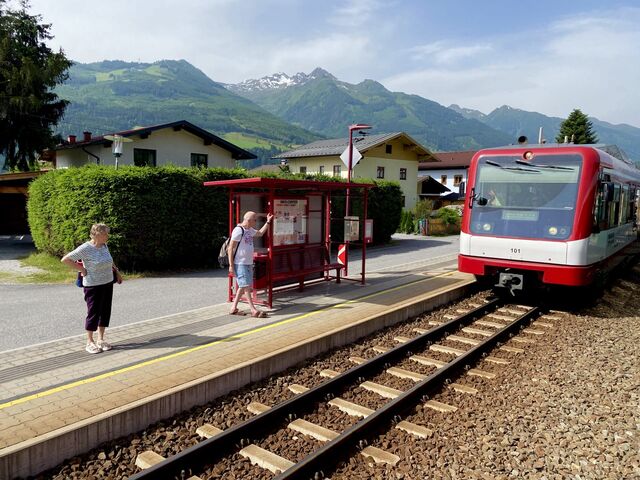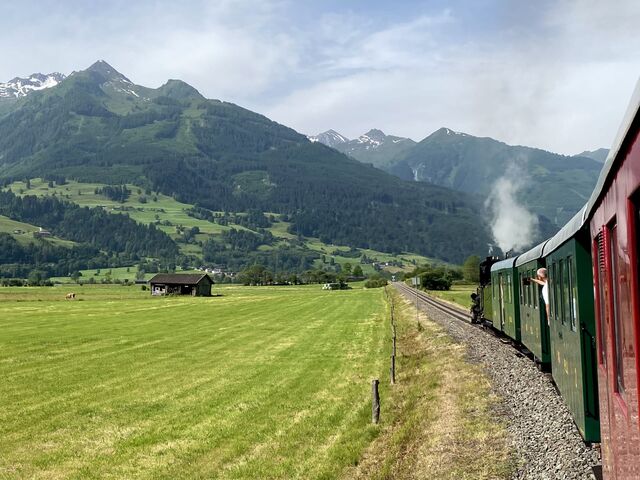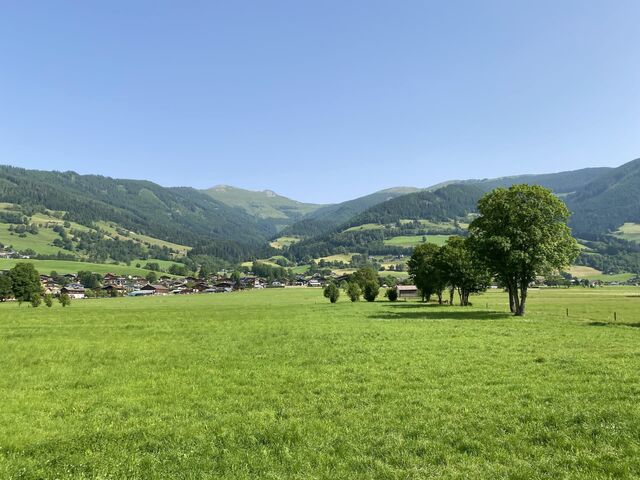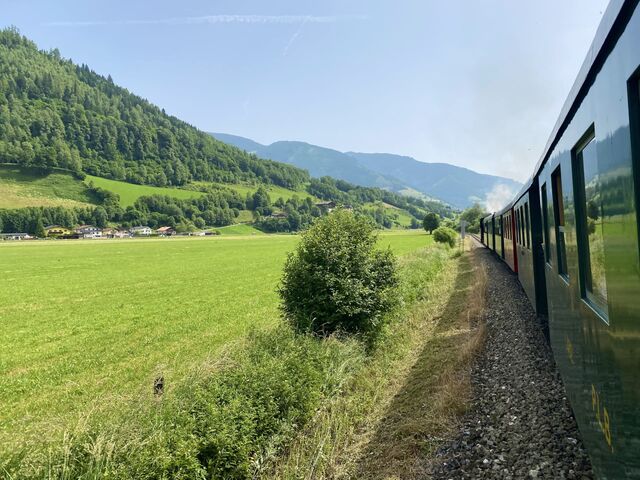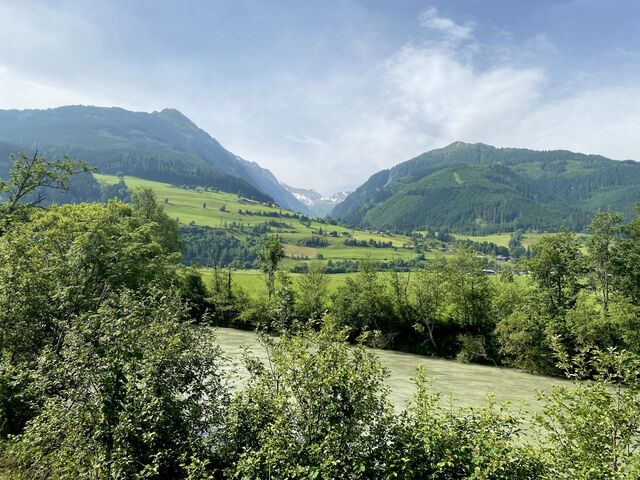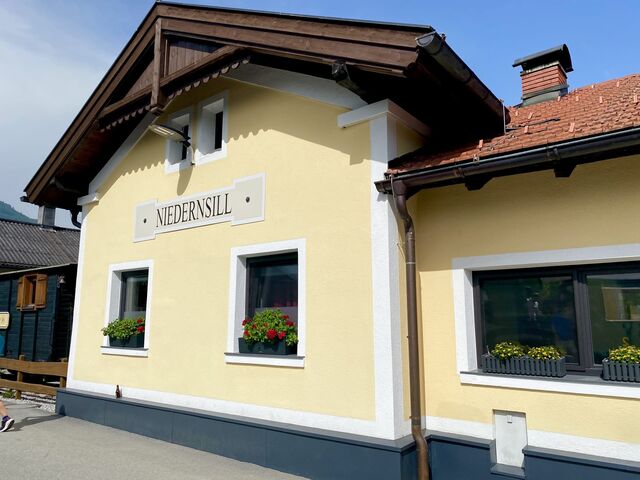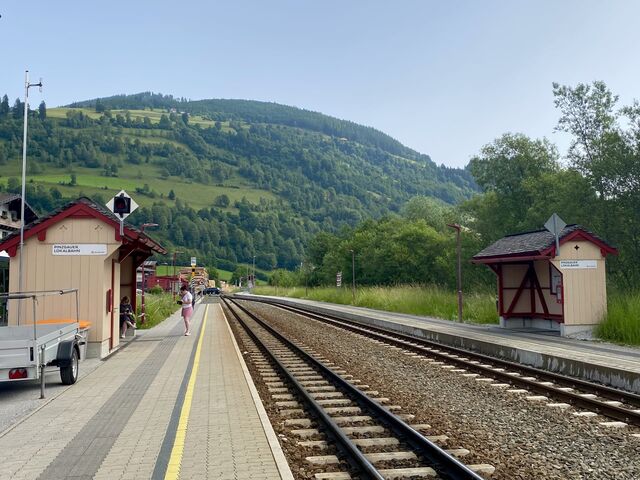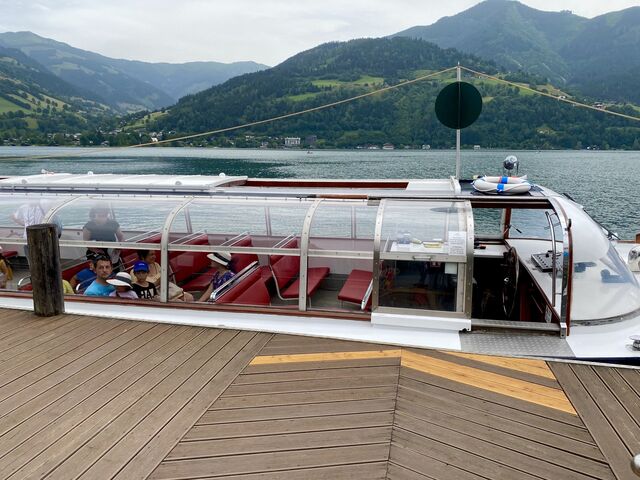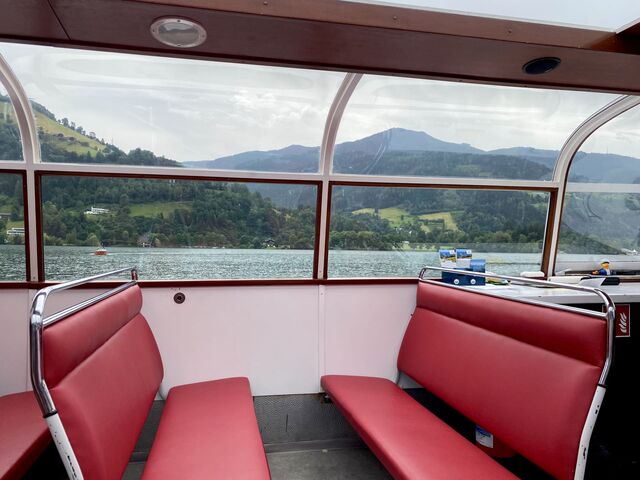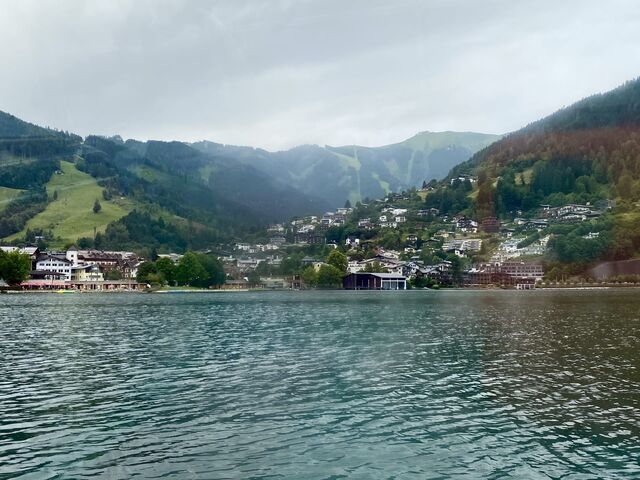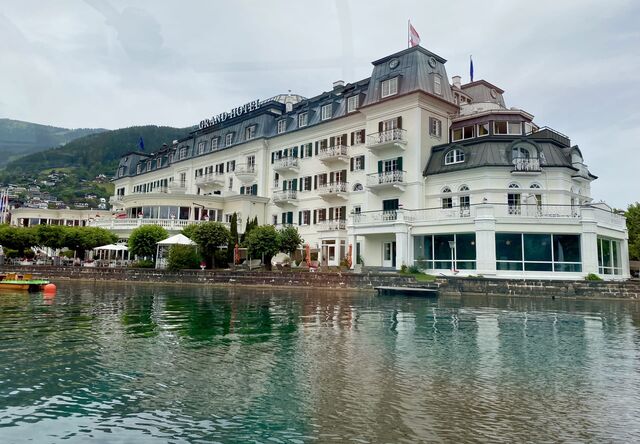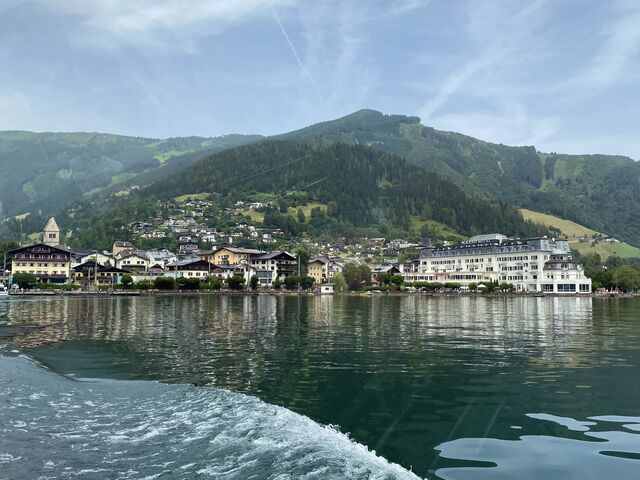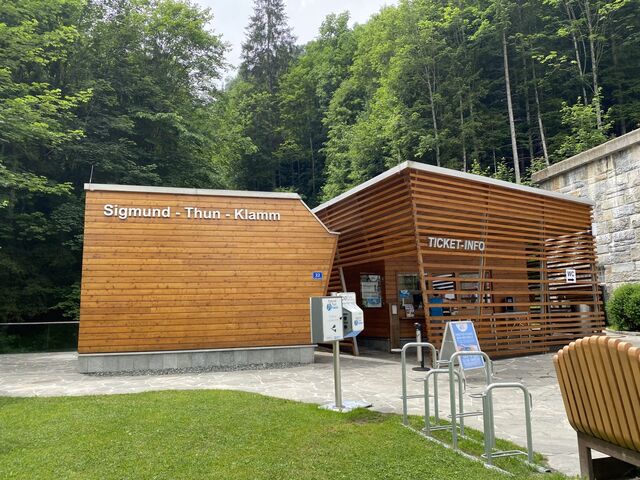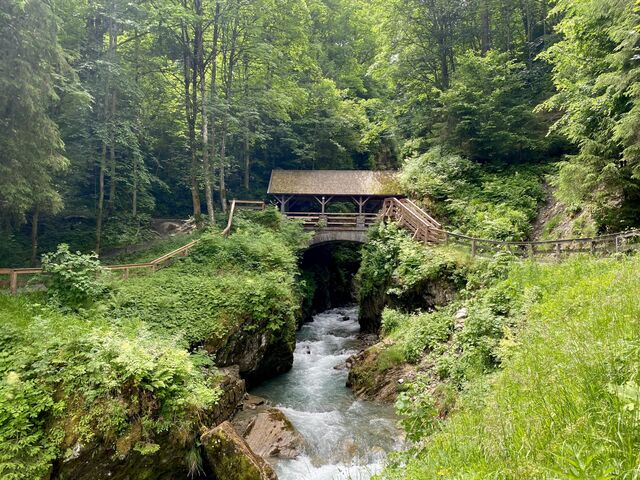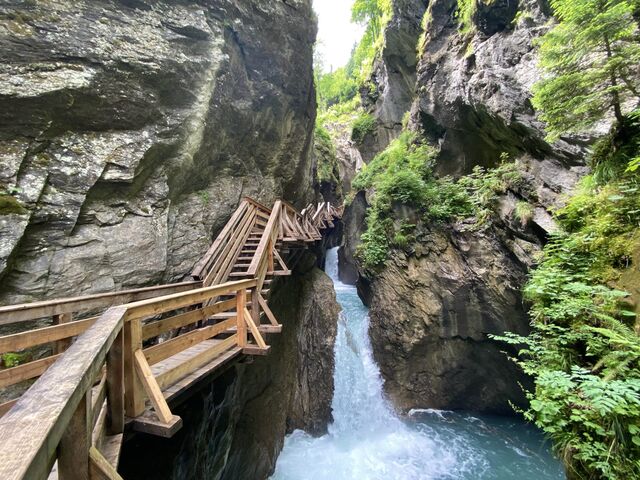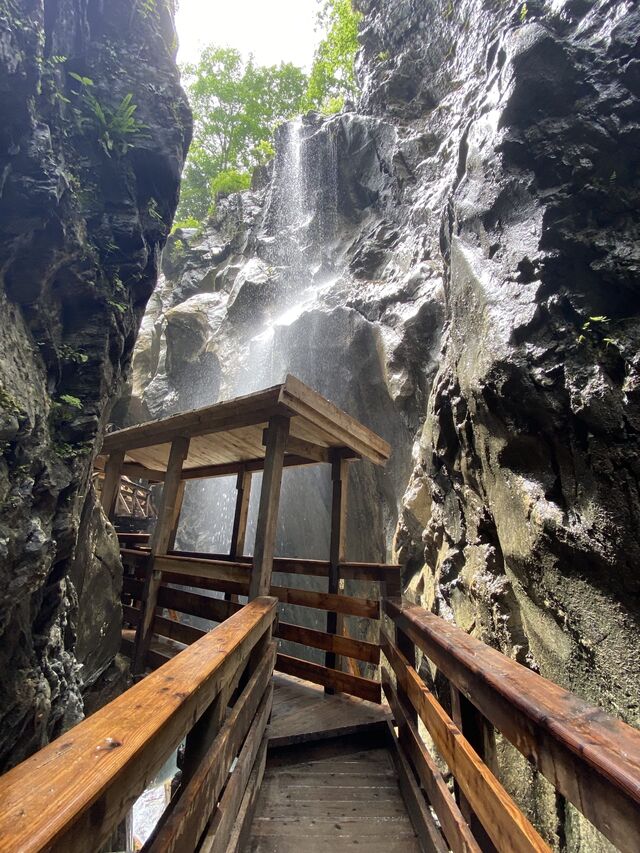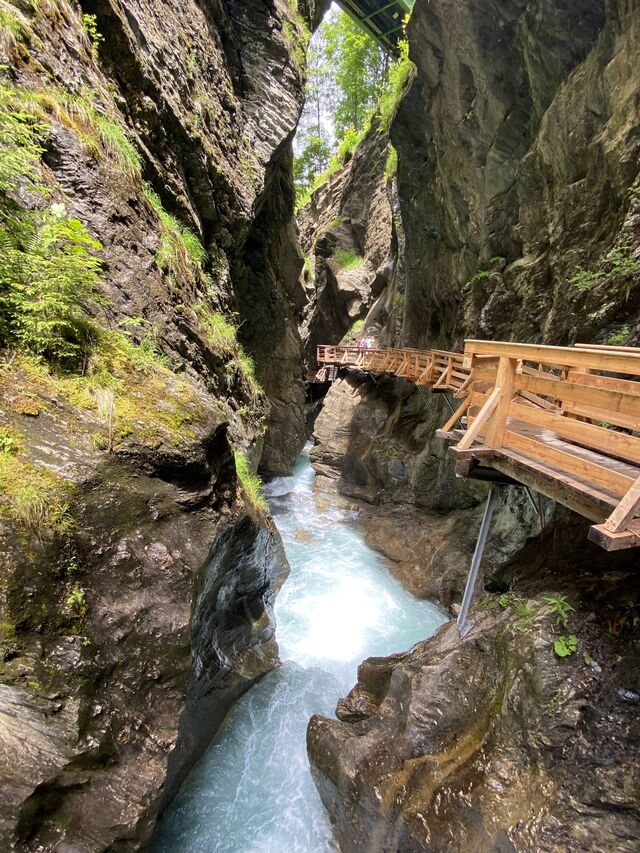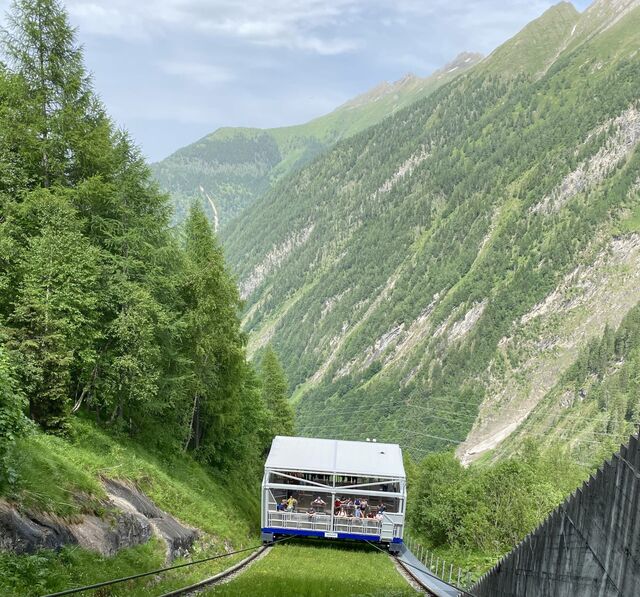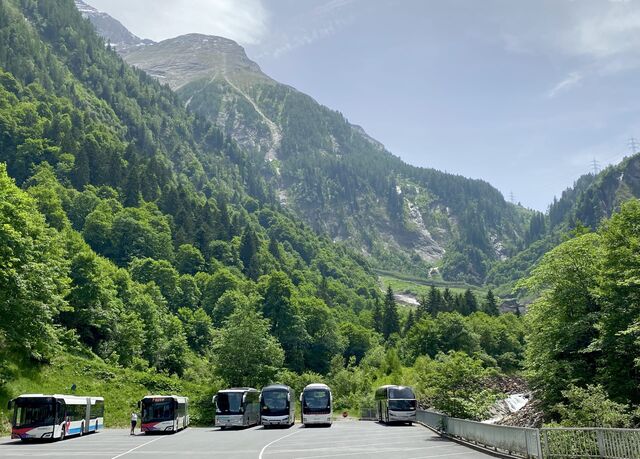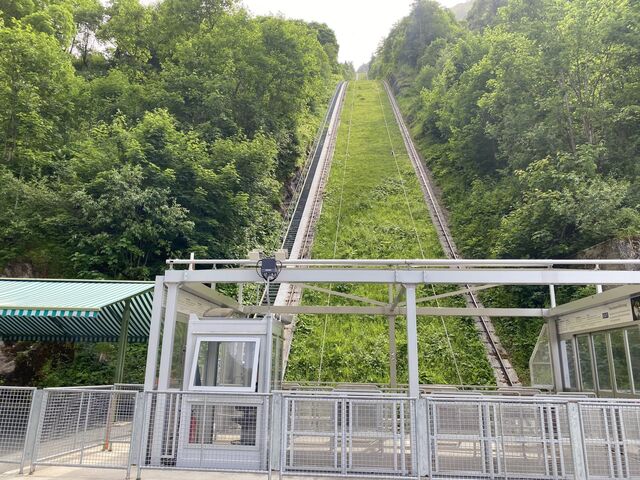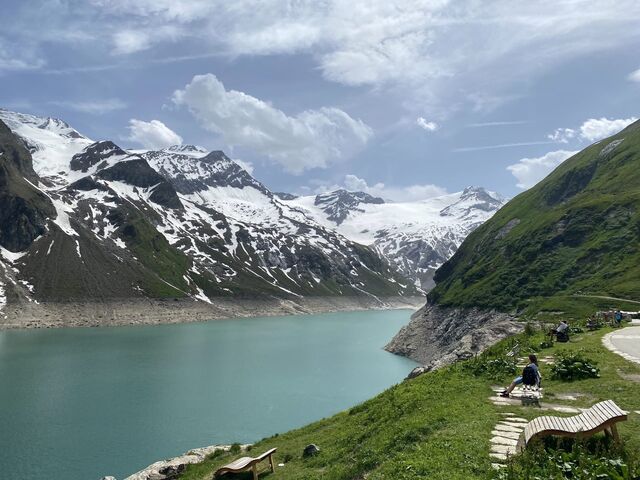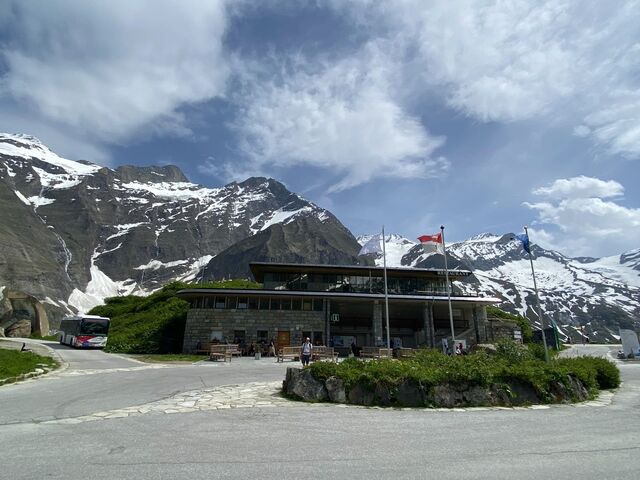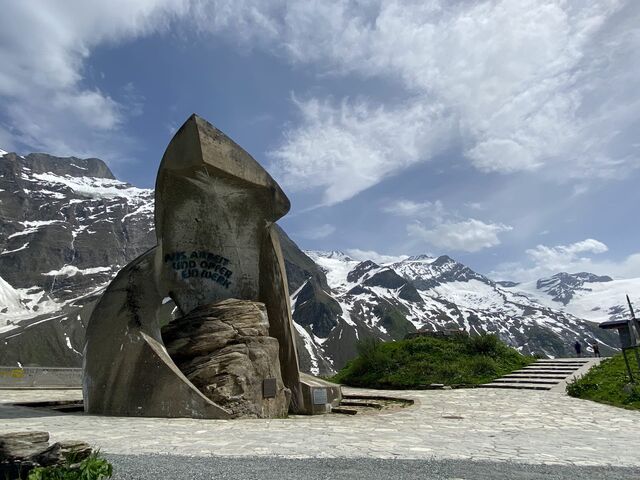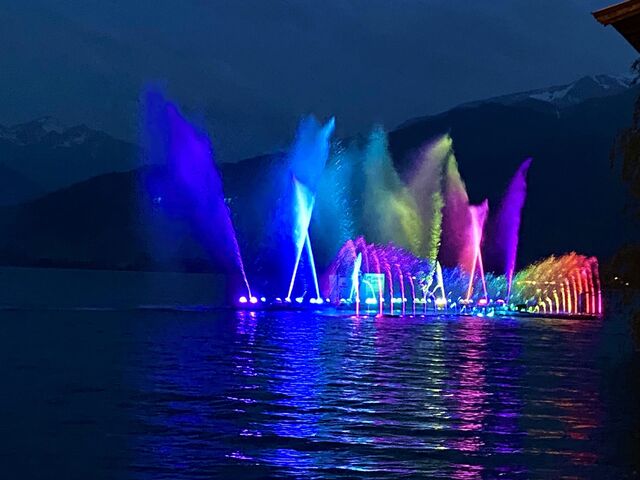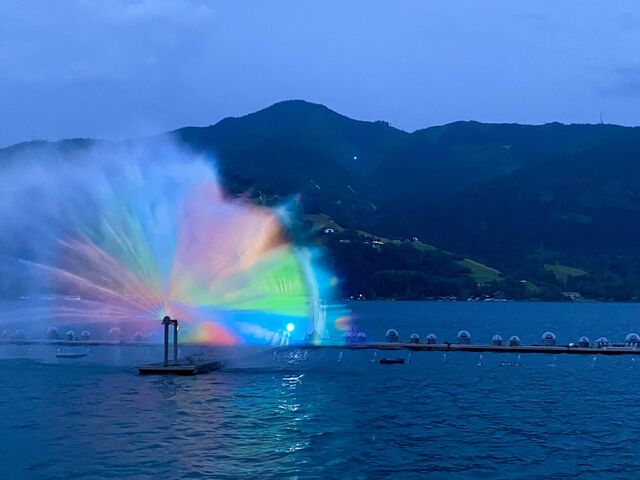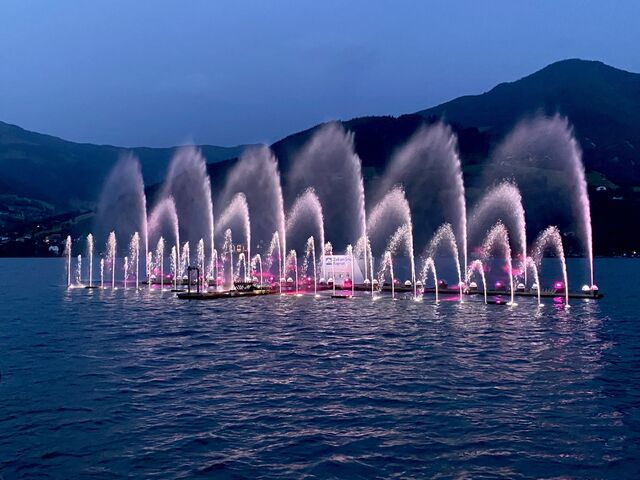Innsbruck to Zell am See
After an enjoyable few days in Innsbruck, Austria, including a trip on the Mittenwald Railway across the border into Germany, I returned to Innsbruck Station to continue my trip on the Transalpin train. You will recall that I did not have much luck with the panorama train carriage on the Zurich–Innsbruck section of this route. Luckily this issue was resolved by the time I rejoined the line two days later. A first-class ticket on the Transalpin between Innsbruck and Zell am See cost me €19, in addition to a €3 seat reservation fee which allowed me to secure my spot in the special first-class panorama carriage.
Although the views on the journey between Innsbruck and Zell am See are less impressive than on the Zurich–Innsbruck segment of the route, they are still very beautiful, consisting primarily of lush green fields, turquoise lakes, and alpine scenery.
Soon after departing Innsbruck Station the train crosses the River Inn which flows through Switzerland, Austria and Germany. Shortly after, the imposing Tratzberg Castle comes into view. The castle is situated high above the valley floor, on a ridge near the town of Jenback. It was constructed in the 13th Century for the purpose of securing the border with neighbouring Bavaria.1 The castle was destroyed by fire in 1492 but was reconstructed in its current form in 1500.2 Today, it is apparently one of the best preserved castles in Austria, containing many of its original furnishings and fittings.
As the train passes the city of Wörgl the railway starts to climb steadily. Shortly before arriving in the ski resort of Brixen im Thale, the Parish church of the Assumption of Mary, constructed 1790—1797, is visible from the train. We then pass Schwarzsee (or the Black Lake) which is apparently one of the warmest lakes for bathing in the Alps.
The next stop was the alpine resort town of Kitzbühel. Situated in the Kitzbühel Alps, Kitzbühel is known for being one of the most exclusive ski resorts in the world. It is also known for having the most expensive real estate in the whole of Austria.3 Visitors who alight here can continue 1,996-metres up the Kitzbühel Horn by cable car. Apparently an apline flower garden with 400 species of plants greets visitors at the top.4 Shortly after passing Hochfilzen Station, the train crosses into the Austrian State of Salzburg.
As we approached Zell am See, the train skirted the edge of Lake Zell. I observed dozens of families basking in the sunshine as they swam in the lake and enjoyed picnics.
Zell am See
Located in Salzburg county, Zell am See is situated in Austria’s Kitzbühel Alps on the shoreline of Lake Zell. This picturesque lakeside town is a popular holiday destination, attracting more than one million visitors per year.5 It is famous for its surrounding mountains and glacier, alongside its crystal-clear lake. Zell am See is also known for being the birth place of Maria von Trapp—a member of the Trapp Family Singers, whose lives inspired The Sound of Music.
I was immediately impressed by the railway station which is positioned on the edge of the lake and enveloped by nature, giving it a very serene ambience.
I had two days in Zell am See. I spent the first day wandering around the picturesque town centre. The impressive Grand Hotel was quick to catch my eye. Built in the Belle Époque style in 1896, the Grand Hotel is located on the eastern tip of the Zell peninsula, directly on the shore of Lake Zell. It is visible from almost every point on the lake.
Aside from strolling along the lake shore, I also enjoyed exploring Zell am See’s picturesque old town.
On my second day in Zell am See I explored the surrounding region. My hotel had given me something called a “Zell am See–Kaprun summer card” (Kaprun being the region of Austria I was in) which provided free access to a huge array of attractions in the surrounding region. The summer card is something that quite a few hotels in Zell am See give to guests, and it is definitely worth looking out for when selecting accomodation. Apparently it is not possible to buy this card separately; it is issued exclusively to guests staying at certain accommodations in the region.
Pinzgau Local Railway
The first attraction I visited was the local Pinzgau train (Pinzgauer Lokalbahn). This narrow-gauge railway has existed since 1898 and travels a 53-kilometre stretch through the Pinzgau mountains between Zell am See and Krimml. The special steam train which I rode on travels a shorter distance between Zell am See and the small town of Niedernsill. The return journey takes approximately 1.5 hours. Heading west from Zell am See, the railway travels through the Salzach River valley. This valley has been an important source of salt, ice, and copper for thousands of years.6
The steam train only runs on Thursdays (and only during the summer months), so I was very lucky that this coincided with my visit to Zell am See. Tickets are purchased on board the train from the conductor. Although the majority of attractions are free with the Kaprun summer card, the steam train excursion is offered at a 30% discount (making the price about €10). If you are not in the area on a Thursday during the summer, there are also regular services along this line which use diesel-powered locomotives.
We stopped at a handful of small stations on the journey to Niedernsill, although the steam train primarily catered to tourists who stayed on board for the whole return journey between Zell am See and Niedernsill. I did not reserve my ticket in advance, however, it is apparently advisable to do so via email (there is no online booking system) because some trips can sell-out quickly due to large tour group bookings. Overall, I thoroughly enjoyed my ride on the Pinzgau steam train through the beautiful Austrian countryside, with its dairy farms and lush meadows.
Other Attractions
Upon arriving back in Zell am See and alighting from the Pinzgau train, I made my way over to Lake Zell where I enjoyed a ride on an excursion boat around the lake. This experience was free of charge with the Kaprun summer card.
After an enjoyable trip around Lake Zell, I travelled to Sigmund Thun Gorge (which took about 30 minutes by bus). This attraction, alongside the bus ticket, was again free of charge with the summer card. Without the card, the price of admission is a very reasonable €7. The gorge was carved through the mountain thousands of years ago by the Kapruner Ache River which flows from glaciers high above the Kaprun Valley.
The 32-metre deep gorge is accessible via wooden boardwalks and bridges and it took approximately 30-minutes to walk its entire 320-metre length. The gorge was named after former Salzburg governor, Sigmund Count von Thun, who, on his first visit to the gorge, observed that: “thunderous and mighty the torrents flow towards us”.7
After returning to Zell am See I had enough time for one more activity and decided, after careful consideration, to visit the Kaprun High Mountain Reservoirs. The journey began with a 1-hour bus ride from Zell am See to Alpenhaus Kesselfall where tickets can be purchased for this attraction. Without a summer card, admission costs €30. However, for holders of the summer card, this attraction is once again free of charge!
The Kaprun High Mountain Reservoirs are located approximately 2,040-metres above sea level. To reach the two high mountain reservoirs—Wasserfallboden and Mooserboden—visitors must first ride a bus some distance up the mountain. The next mode of transportation is the Lärchwand inclined lift (Lärchwandschrägaufzug)—Europe’s largest open inclined lift which carries visitors another 431-metres uphill.
Another bus then travels on a high mountain road, transporting visitors the remainder of the way to Wasserfallboden and Mooserboden. As we approached the top, the two high mountain reservoirs with their turquoise waters were visible in the distance and looked spectacular embedded in the alpine landscape.
The Kaprun High Mountain Reservoirs are the site of an hydroelectric power plant which uses the natural flow of moving water to generate clean electricity. The glaciers above the reservoirs supply the necessary water. It has been called ‘the world’s most beautiful battery’.8 Construction began under the rule of Nazi Germany and was completed by America after World War II.9 Visitors can elect to take a guided tour of the dam walls to learn about how electricity is generated via hidden turbines. After spending about 45-minutes walking around and taking pictures of the high mountain reservoirs, I had a very late lunch at the Mooserboden mountain restaurant, but did not find the food to be very enjoyable.
After spending a couple of enjoyable hours at the high mountain reservoirs, I made my way back to Zell am See.
I had no idea that there was so much to do in the Zell am See-Kaprun region of Austria and would have definitely spent longer in the area had I realised. As it was, I only had limited time in Zell am See before continuing my railway journey to Poland. I was very pleased with the activities that I chose and with 15-hours of daylight during the summer, it was easy to squeeze quite a few different experiences in. While I was initially uncertain about whether to visit the Kaprun High Mountain Reservoirs, given the 1-hour journey time from Zell am See, I am glad that I found the time for a visit. That said, there were probably 25 other attractions included with the summer card that I wasn’t able to experience, including entry to about half a dozen museums and, more excitingly, at least 3 different cable car rides, including one that travels from Zell am See to the summit of Schmittenhöhe. On my final night in Zell am See, I attended a free light show on Lake Zell.
The following morning I awoke early and continued my journey through Austria by train—next stop Vienna, via Graz and the UNESCO World Heritage-listed Semmering Railway!
Tirol Werbung, ‘Tratzberg Castle’ (online, 2024). ↩︎
Tyrol.tl, ‘Tratzberg Castle’ (online, 2024). ↩︎
The Local Austria, ‘Austrian homes most expensive in Kitzbühel’ (online, 3 September 2014). ↩︎
Tyrol.tl, ‘Alpine Flower Garden Kitzbüheler Horn’ (online, 2024). ↩︎
Lonely Planet, ‘Zell am See’ (online, 2024). ↩︎
David Bowden, Great Railway Journeys in Europe (John Beaufoy Publishing, 2023) 114. ↩︎
Zell am See-Kaprun Tourismus, ‘Sigmund Thun Gorge’ (online, 2024) ↩︎
Jonathan Tirone, ‘The World’s Most Beautiful Battery’ (Bloomberg, online, 1 October 2018). ↩︎
Ibid. ↩︎
